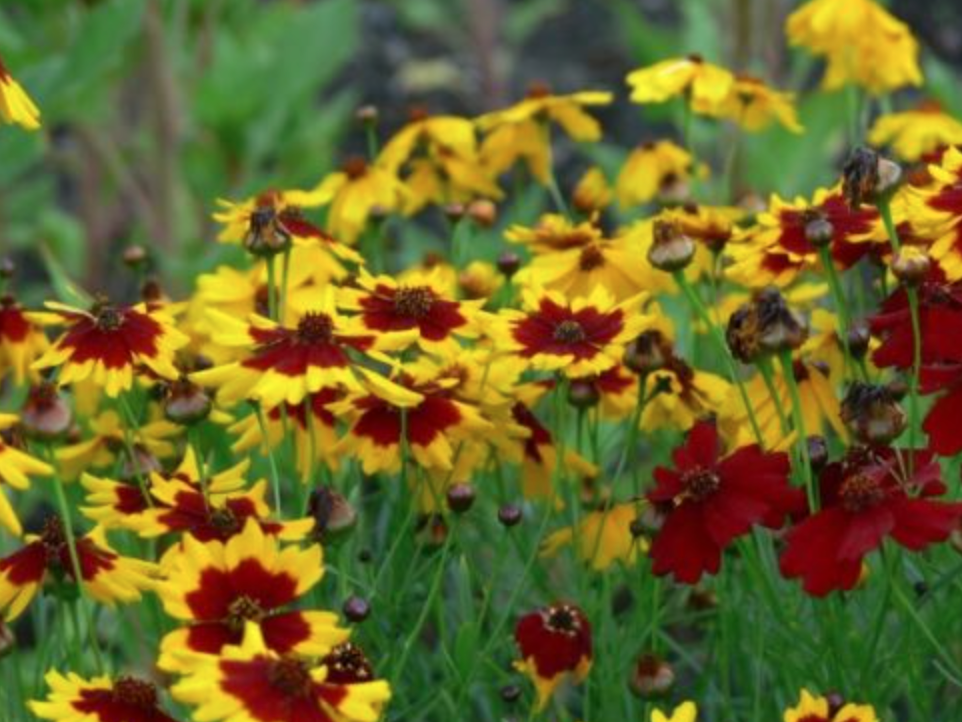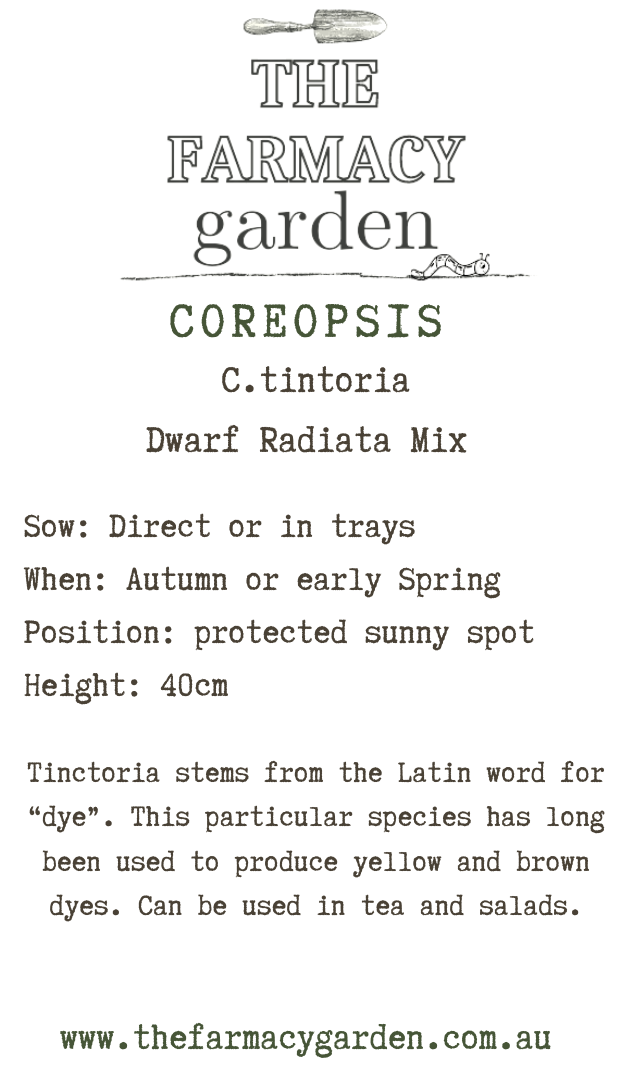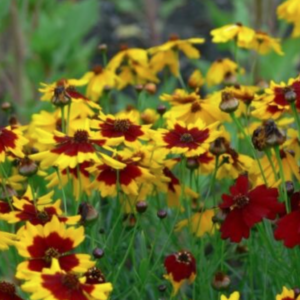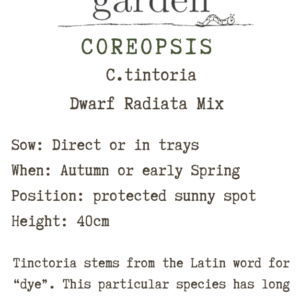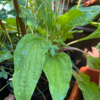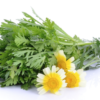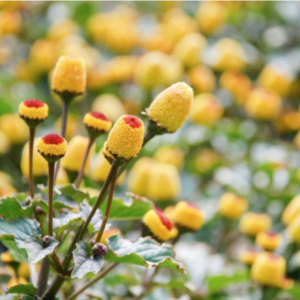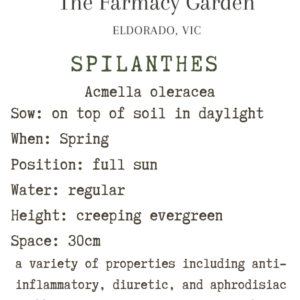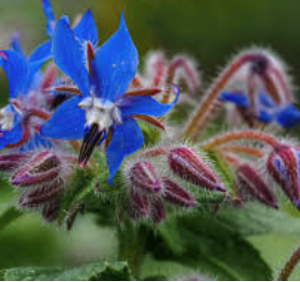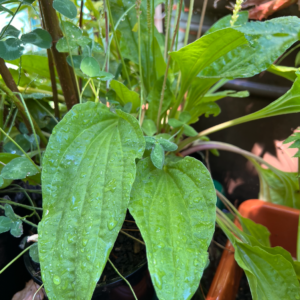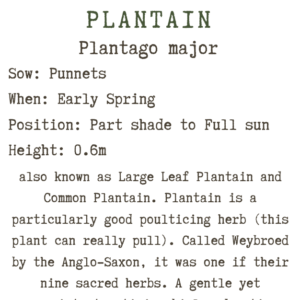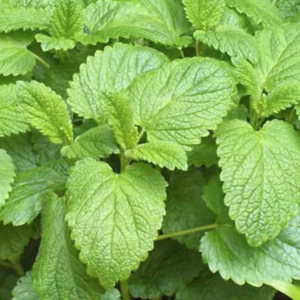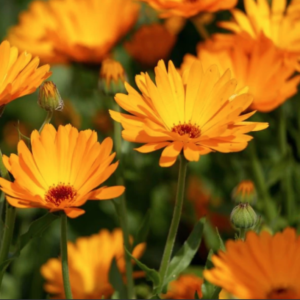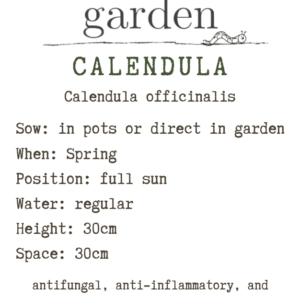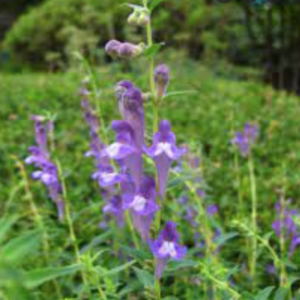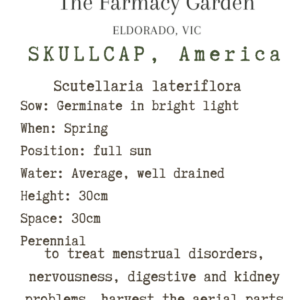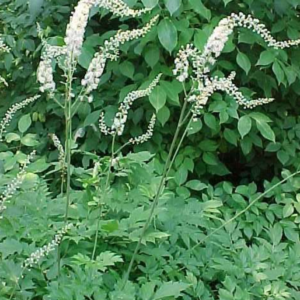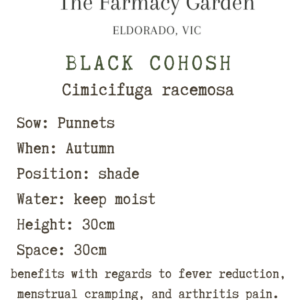Coreopsis (Dwarf Radiata) Seeds, Coreopsis tinctoria
$4.50 Original price was: $4.50.$2.00Current price is: $2.00.
Coreopsis, also known as tickseed or pot of gold, is a long-lasting flower that grows in most any area in the United States. The plant is referred to as tickseed because its seeds resemble ticks. Coreopsis are in the Asteraceae family, and the blooms are similar to those of a daisy.
Coreopsis, also known as tickseed or pot of gold, is a long-lasting flower that grows in most any area in the United States. The plant is referred to as tickseed because its seeds resemble ticks. Coreopsis are in the Asteraceae family, and the blooms are similar to those of a daisy. The name “coreopsis” comes from the Greek word for bug, or koris and view, or opsis. The name refers to the coreopsis achenes or seeds, which are small, black and resemble ticks or insects.
Tinctoria stems from the Latin word for “dye”. This particular species has long been used to produce yellow and brown dyes.
While in bloom, pollinators like bees and butterflies flock to the brightly coloured blossoms. After blooming, flower heads produce black seeds or achenes. These attract songbirds through the Autumn.
GROW: Raise seedlings or sow direct with Sowing Depth of 1mm in Spring or Autumn. A hardy annual to 40cm. place in full sun or part shade.
HARVEST: Pick the flowers either in full bloom or as they begin to fade. Harvesting the flowers before they set seed causes even more flowers to bloom. Cut the plants back to encourage a second flowering. You can use the flowers fresh or dry them until you have enough for a dye bath.
Medicinal Uses
Indigenous North Americans used C. tinctoria roots to create a tea that was used as an emetic and as a treatment for diarrhea. A flower infusion was also used to treat internal pain, strengthen the blood, and stop bleeding.
In China — where coreopsis is known as snow chrysanthemum — tea is used to treat high blood pressure, diabetes, and high cholesterol. Scientific research indicates that coreopsis tea may help regulate metabolism and control hyperglycemia. Studies from the University of Macau indicate that C. tinctoria leaves, stems, and buds contain beneficial flavonoids and antioxidants.
Food and Drink Using Coreopsis
Dried plants can be used to make tea. Coreopsis has also been used as a coffee substitute.
Related products
Medicinal Herb Seeds
Flower Seeds
Medicinal Herb Seeds
Medicinal Herb Seeds
Flower Seeds
Flower Seeds
Flower Seeds

